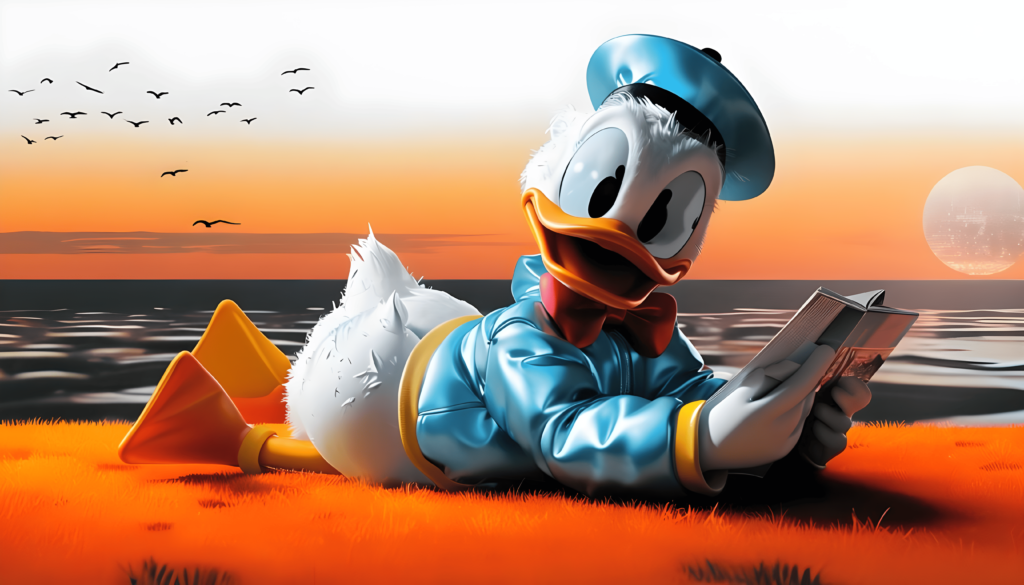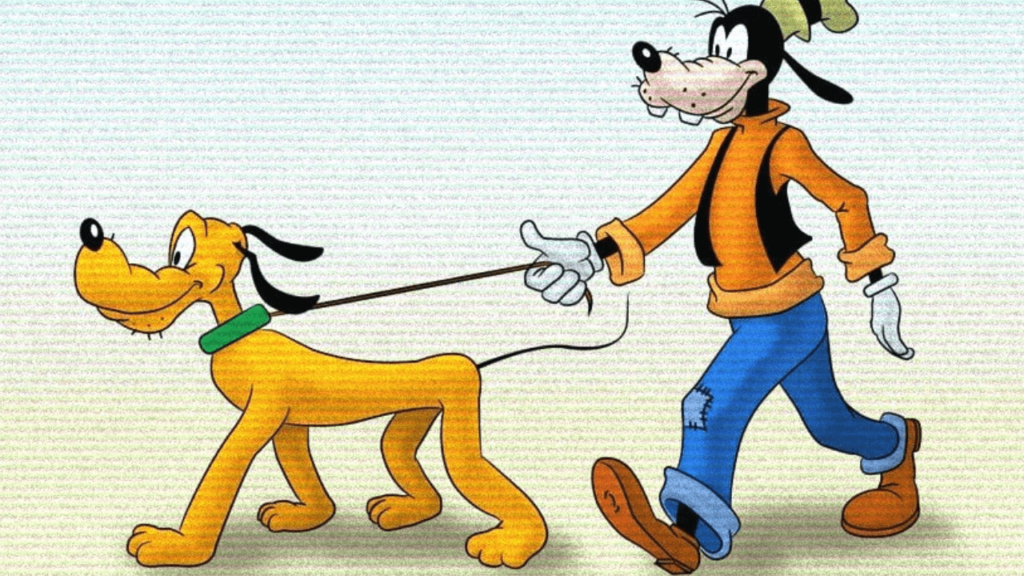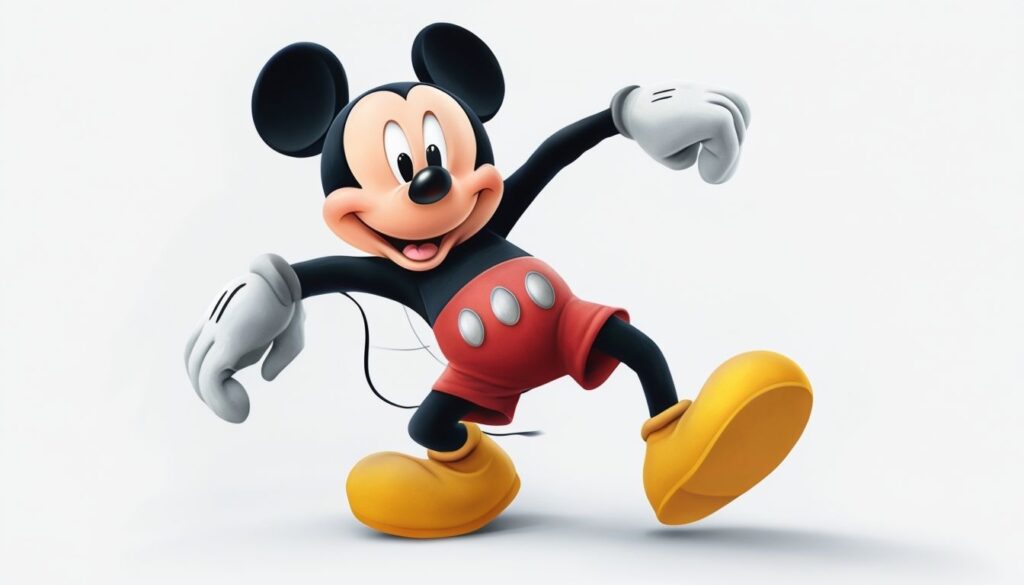
Walt Disney once said, “It was All Started by a mouse”
Yes you read it right! These were the words from Walt Disney(creator of Mickey mouse character)
But is he really the one who chose the same name that we are used to call!
No!
Mickey Mouse’s initial name that Walt Diney gave him was Mortimer Mouse, but later Lillian Disney(Walt Disney’s wife) did not agree with him and fortunately our childhood hero’s name was announced as Mickey mouse!
The iconic character of Disney’ world!
Now the first question has arrived!
Who is Mickey Mouse?
So, here is a short definition for you.
Mickey Mouse is an iconic animated character officially created by Walt Disney and Ub Iwerks, debuting in the short film Steamboat Willie (1928), one of the first synchronised-sound cartoons.
Known for his distinctive round ears, red shorts, white gloves, and cheerful disposition, Mickey became Disney’s mascot and a cultural phenomenon. Over the years, his character evolved from a mischievous, adventurous figure to a symbol of kindness, bravery, and optimism. Mickey’s influence extends globally across films, television, theme parks, and merchandise, making him one of the most recognized and enduring symbols of entertainment and family-friendly values.
1. Personality Traits of Mickey Mouse
Mickey Mouse’s personality is a key part of his enduring appeal. His realistic qualities that resonate with audiences worldwide:
Optimism and Kindness
Mickey is unfailingly optimistic and kind-hearted, even in the face of obstacles. He’s known for his cheerful disposition, seeing the best in situations and people. His unwavering kindness makes him a figure of hope and goodwill.
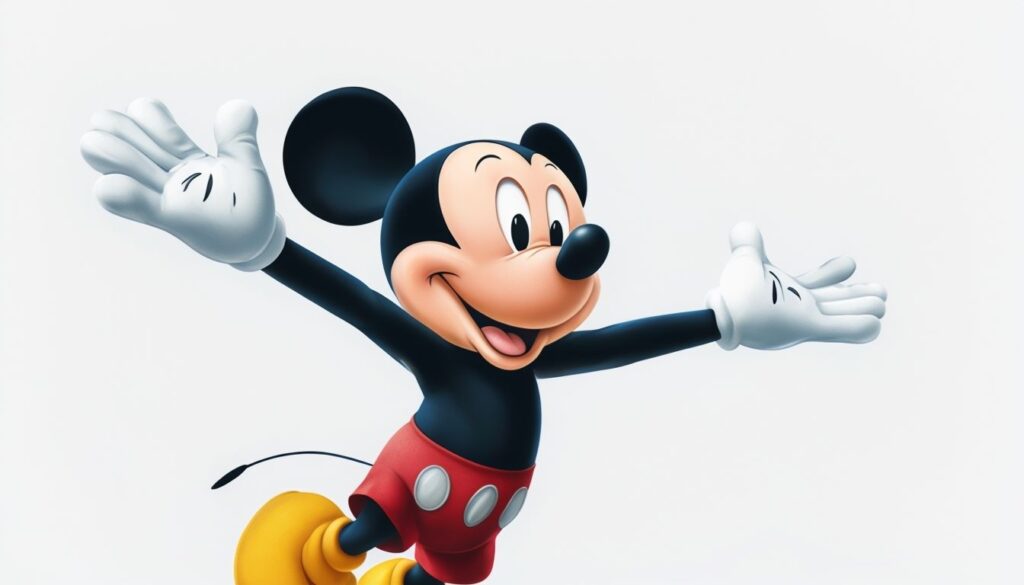
Bravery and Loyalty
Mickey often finds himself in challenging situations, but he rarely backs down. His bravery and determination make him a natural hero, ready to protect his friends and stand up to adversaries. His loyalty, especially to his friends like Minnie, Goofy, and Donald, showcases his strong commitment to those he loves.
Mischief and Humor
Although Mickey is brave and kind, he also has a playful, mischievous side.
Early Mickey cartoons often showcased his playful pranks and lighthearted humor. This aspect of his character makes him relatable and adds dimension to his personality.
Mickey’s personality evolved over the decades, reflecting changes in society and Disney’s creative vision. In his earliest appearances, he was more mischievous, with a rebellious streak, while later versions emphasized his polite and wholesome qualities, making him an ideal role model for children.
Although Mickey is not a perfect character, this is one of the major reasons that make him one of the relatable characters, and by the time his character evolved and he became mature!
2. Mickey Mouse’s Physical appearance
The simplicity of Mickey’s design is a crucial part of his character appeal. He was designed with circular shapes—his head, ears, and body are all rounded, giving him an approachable, friendly appearance.
Mickey’s design has evolved slightly over time, becoming more polished with each generation. The initial, black-and-white version of Mickey had slightly jagged lines and smaller eyes, but as animation technology advanced, his design became smoother and more expressive. The addition of color in the 1935 cartoon “The Band Concert” introduced Mickey’s iconic red shorts, white gloves, and yellow shoes, creating a classic look that’s still in use today. These visual traits, combined with his exaggerated expressions and gestures, make Mickey an animated character whose emotions and personality are easy to understand.
3. Mickey Mouse in Various Media
Mickey Mouse has appeared in various media, each adaptation adding to his legacy and appeal:
Classic Cartoons and Films
From “Steamboat Willie” to “Fantasia,” Mickey’s roles in classic animated films helped him become a household name. Each cartoon showcased a different side of Mickey—sometimes he was a conductor, other times a sorcerer, and always an adventurer. These roles highlighted his adaptability and bravery.
Comics, Theme Parks, and Merchandise
Mickey’s popularity extended beyond the screen. He became a popular character in Disney comics, a must-have figure in toys, and a major presence in Disney theme parks around the world. His presence in Disneyland and Disney World further strengthened his role as Disney’s ambassador and symbol of magic.
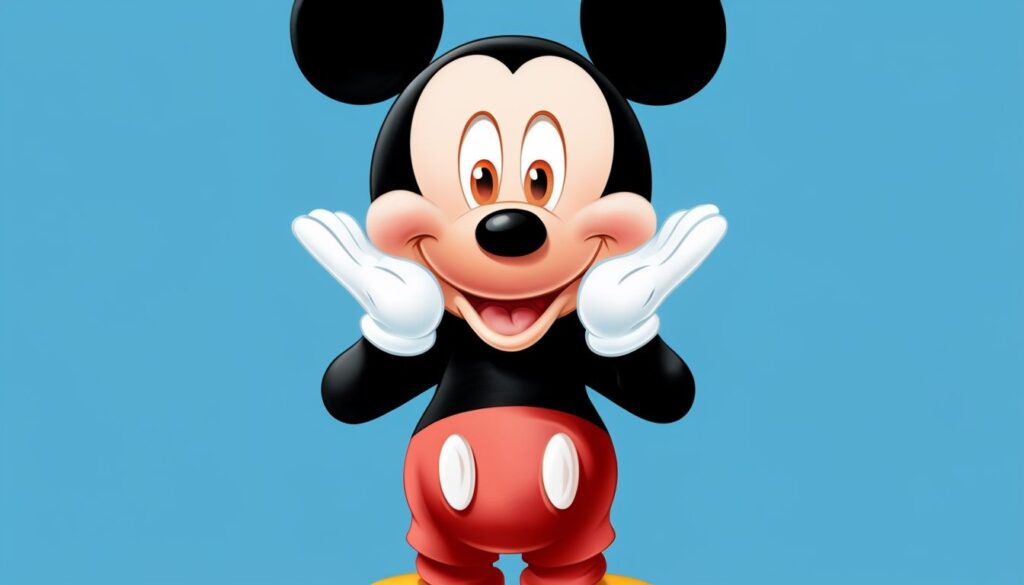
4. Voice and Personality in Animation
Mickey’s voice is another essential part of his charm. Originally voiced by Walt Disney himself, Mickey’s distinctive voice has been kept consistent over the years, lending authenticity to his character. His cheerful and friendly tone is immediately recognizable and reinforces his optimistic nature.
Mickey has been reimagined in modern cartoons and media, such as Mickey Mouse Clubhouse and Mickey and the Roadster Racers, which introduce him to new generations. Despite the updates, Mickey’s core personality remains the same, making him a familiar and comforting presence for audiences of all ages.
5. Symbolism and Themes in Mickey Mouse Stories
Mickey Mouse’s stories often explore universal themes that resonate with audiences:
Friendship and Loyalty
Mickey’s loyalty to his friends, especially Minnie Mouse, Goofy, and Donald Duck, highlights the importance of companionship. He’s always ready to help his friends in need, emphasizing the value of friendship in overcoming obstacles.
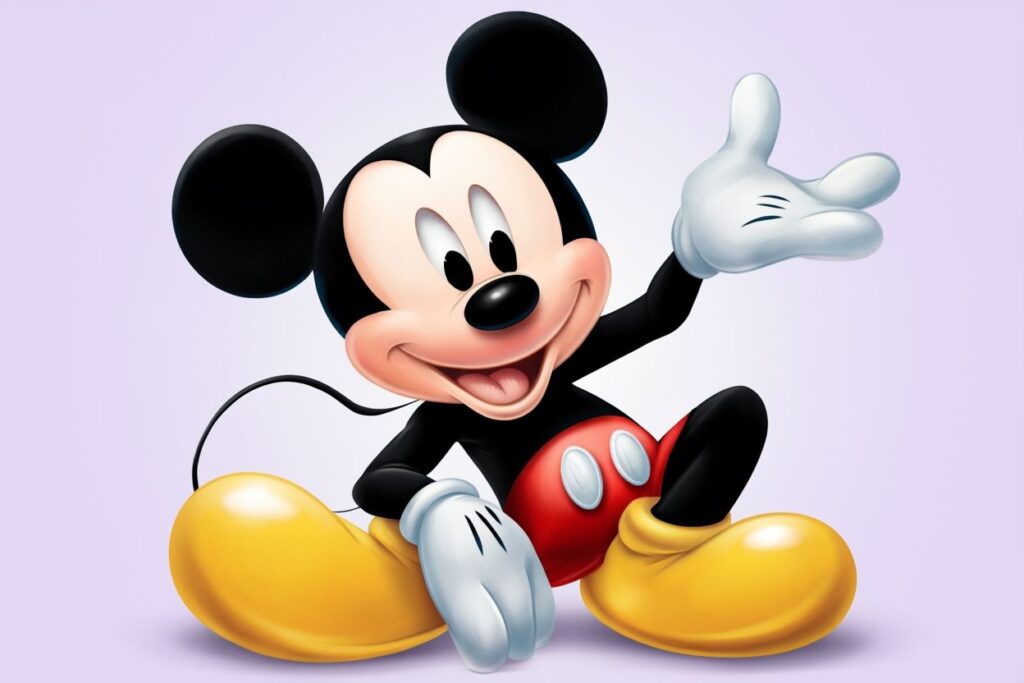
Courage and Resilience
Many of Mickey’s stories involve challenges that require bravery and determination, such as facing villains or rescuing his friends. His resilience, even in the face of trouble, makes him a figure of strength and courage.
Playfulness and Joy
Mickey’s stories often incorporate humor and lighthearted fun, underscoring his belief in joy and happiness. His playful nature reminds audiences that life should be enjoyed, even when faced with difficulties.
Mickey’s character is designed to represent universal values, making him relatable across generations. His simple yet powerful themes of friendship, resilience, and joy make him a role model for children and an endearing figure for adults.
6. Cultural Influence and Legacy of Mickey Mouse
Mickey Mouse’s impact on pop culture cannot be overstated. He’s not just a character but a symbol of Disney itself. His influence has shaped animation, fashion, music, and even art. As Disney’s mascot, Mickey represents the brand’s core values: family, imagination, and creativity.
His popularity has inspired countless other animated characters, setting a standard for personality-driven storytelling. Mickey Mouse has appeared in tribute art, fashion collaborations, and pop culture references worldwide. His silhouette—three simple circles—is instantly recognizable and has become one of the most famous symbols in modern culture.
Mickey’s legacy is also preserved through Disney theme parks, where he appears in parades, shows, and as a mascot. His cultural significance even extends to real-world events: Mickey was the first animated character to receive a star on the Hollywood Walk of Fame, solidifying his place as a beloved cultural icon.
7. Mickey Mouse Friends Name
Mickey mouse friends are
1. Minnie Mouse
2. Donald Duck
3. Goofy
4. Pluto
5. Daisy Duck
8. Conclusion: Why Mickey Mouse is a Lasting Icon
Mickey Mouse’s longevity is a testament to his universal appeal and enduring qualities. His optimistic personality, adaptability, and timeless design have made him a character who can connect with audiences regardless of age or background. Mickey’s ability to evolve with changing times while retaining his core characteristics makes him a symbol of resilience and joy.
In a world of ever-changing media and entertainment, Mickey Mouse remains a steady, comforting presence—a reminder of the power of kindness, bravery, and humor.
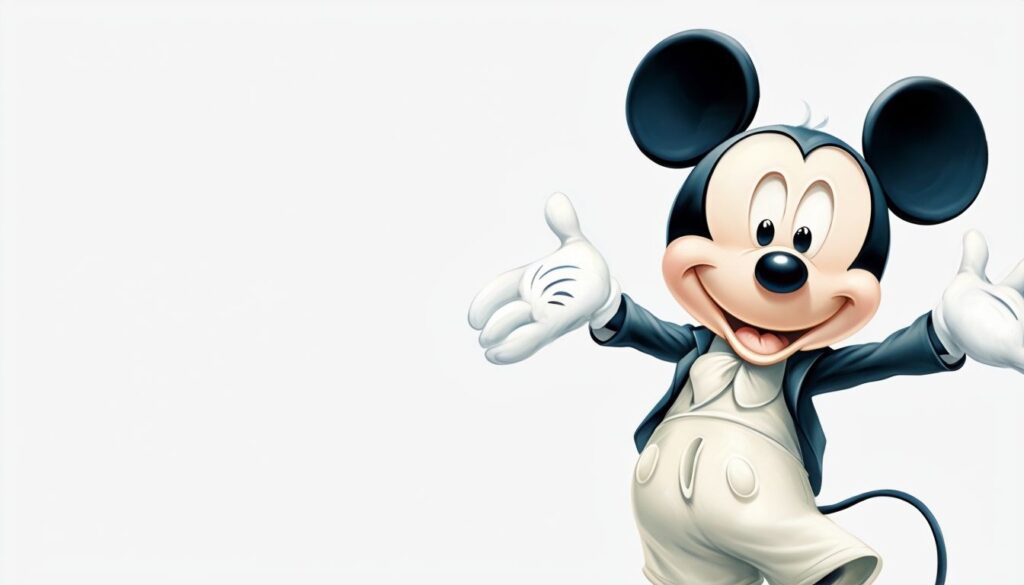
FAQs on Mickey Mouse
1. Why was Mickey Mouse created?
Mickey Mouse was created by Walt Disney and Ub Iwerks after Disney lost the rights to his previous character, Oswald the Lucky Rabbit. Disney needed a new character, and Mickey’s cheerful, determined personality helped launch his career in animation.
2. What makes Mickey Mouse so popular?
Mickey’s popularity stems from his optimistic personality, timeless design, and versatility. He appeals to people of all ages and represents universal values like friendship and courage, making him relatable across cultures and generations.
3. How has Mickey Mouse evolved over the years?
Mickey’s design and personality have evolved to reflect changes in animation technology and societal values. While his mischievous side was more prominent in the early cartoons, he later became a polite, kind-hearted character, making him an ideal role model for children.
4. What does Mickey Mouse symbolize?
Mickey Mouse symbolizes joy, resilience, and the power of imagination. As Disney’s mascot, he represents the brand’s values and has become an icon of family-friendly entertainment.
With his rich history, charming personality, and cultural impact, Mickey Mouse continues to be a beloved character that brings joy to millions. His legacy as a cultural icon shows the power of a well-crafted character who speaks to universal human values.

